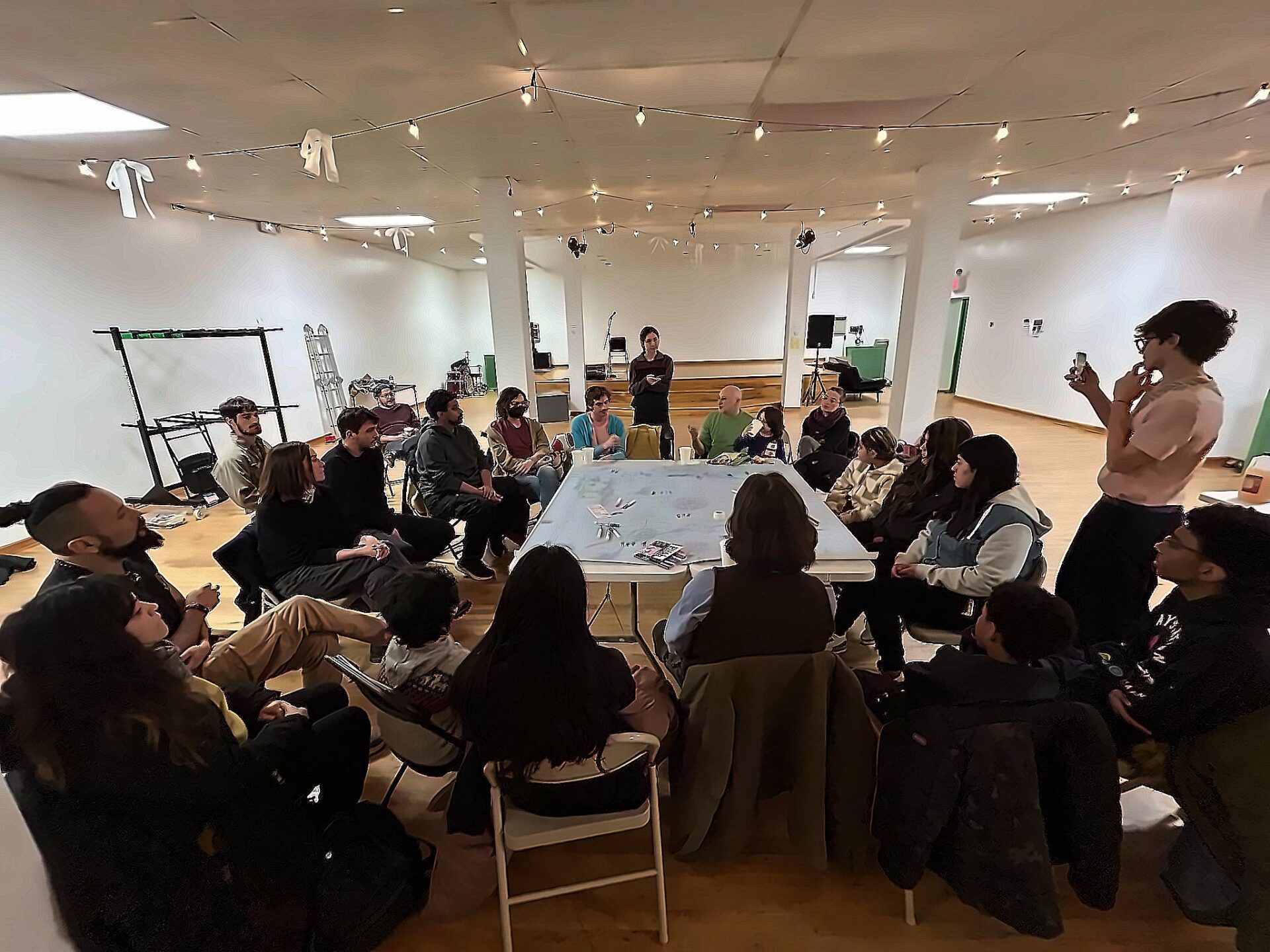What happens in the imagination of a generation that enters the world of affection with the prohibition of touching the lips of the other person?
Franco “Bifo” Berardi
The topic of Care Units as part of Visual Assemblies emerged in dialogue between David Graeber and Nika Dubrovsky back in 2019 during the pandemic. The name is somewhat controversial because it is based on the short story by J.G. Ballard, The Intensive Care Unit, which portrays the catastrophic violence in a society that lacks human connection.
Leopoldo Fox-Zampiccoli:
Our plan is to display on a VA tablecloth a blank map of New York City. We will have stickers with images of ponds, trees, birdhouses, small sidewalk gardens and other easy-to-set-up ‘care units’. We will also have blank stickers where participants can draw whatever other care unit they come up with.
Everyone can add their care units on the table cloth to map out the location past, present and future care units: those already in place, those that were there before, and those that people dream or plan of.
This Visual Assembly will be a first moment to collect these examples, and upload them on a google map afterwards. To every location, people can add their name and/or contacts, if they want to be contacted and weave new conversations.
This map will become freely accessible so that people can add more care units even if they couldn’t make it to the Assembly. Potentially, we could organize more Visual Assemblies to record more care units and spark the imagination of future ones.
Nika Dubrovsky:
I participated in a reading group set up by Russian immigrants in Paris, where we read J.G. Ballard’s story during the pandemic. David and me both got sick almost immediately, and later it turned out he was dying. It seemed crucial, amid everything, to break the matrix we found ourselves in, to invent a mechanism that would cut through the blockade, allowing us to communicate with each other and restore our humanity.
A big part of the plan is to immediately upload everything to Google Maps, both during the planning process and after the Assembly. This will provide access to an unlimited number of participants who cannot attend the Assembly in March because they may not have the time or opportunity to be there.
Even at the Mayday Room, our last assembly, there were already too many people, so not everyone was able to speak because time was limited.
In a way it is great! We need as many participants as possible!
In fact, we need the whole city—or at least 99% of it!
I believe an important part of participating in this initiative is that it won’t require much effort from people (a very low entry threshold). Becoming a participant and placing your Care Unit on the map should be very simple: someone could install a birdhouse on a tree near their home, someone else could place a flower bed on their porch, or simply put a decorated chair where people can sit—anything that can be shared and invite others to join or add to it (just like in the original aquarium idea). This way, many people can collaborate, support each other, and most importantly, signal to each other that they are part of a different network, not tied to hierarchy or their neighborhood—they are just fellow city dwellers.
The aquarium project, which inspired our initiative, was an intervention into public space. Even though this intervention was small (just 30 cm reclaimed from the sidewalk), it was immediately noticed and shut down by the authorities. But imagine if many such spaces appeared at once?
1,000 birdhouses across New York? 100 chairs decorated with flowers where passersby can sit? Could this be banned? And why would it be banned?
It’s exhilarating to think about how public space is shaped by us, how we can take control of it by signaling to each other that we exist all over the city.
Google Map: Unites of Care — Imaginary and Real. You can add your Unites of Care — along with descriptions, drawings, and photos.










